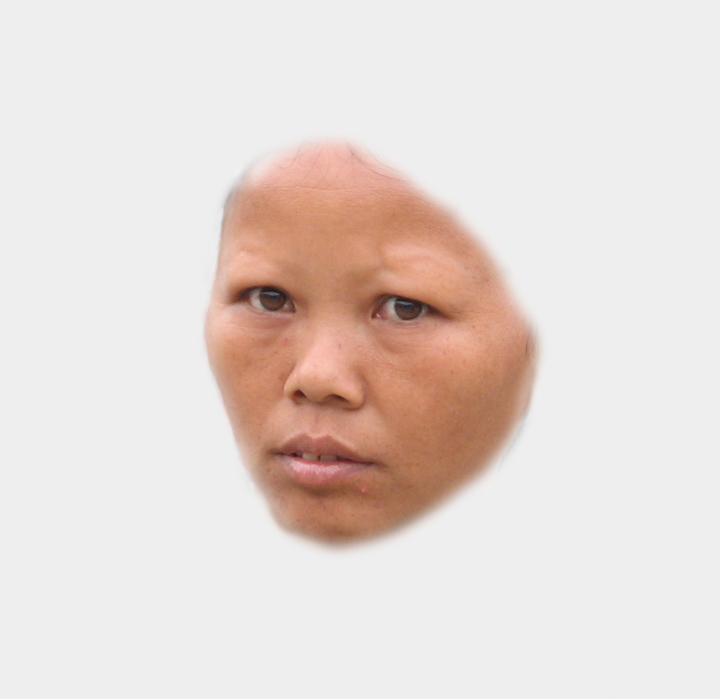

The Face
... access to the face is straightaway ethical ... The best way to encounter the Other is not even to notice the color of [the] eyes! When one observes the color of the eyes one is not in social relationship with the Other ... The face is what one cannot kill, or at least it is that whose meaning consists in saying: “thou shalt not kill.” Murder it is true is a banal fact: one can kill the other, the ethical exigency is not an ontological necessity. The prohibition against killing does not render murder impossible.
Emmanuel Levinas (1982)

A context-free face is not easy, but Levinas wants us to sidestep, not just the cultural context (see the photograph below) but all physical attributes. Disentangling the ethical from the physical is always problematic; and Levinas
division
 Divorcing thought and morality.
Divorcing thought and morality.
is radical. Maybe his ethical stance is a form of intuitionism: the moral command comes immediately, un-shaped by reason. The exigency, as he calls it, means we are required to set aside the physical; to derive from the face what is not part of the physical face. The degree of this disentangling matters, the ethical may float away from us, rather as minds may float away from brains; and the Other may become as estranged as Husserl’s
Other.
 (Is it only on the surface?) A rather different use of a capitalised “Other”.
It’s a narrow path, for surely also Hume’s claim about aesthetics has
substance:
(Is it only on the surface?) A rather different use of a capitalised “Other”.
It’s a narrow path, for surely also Hume’s claim about aesthetics has
substance:
 The problem of our relationship to beauty.
The problem of our relationship to beauty.
that reason does not sway our sense of beauty. Aesthetics and ethics seem to draw close as with both we wish to prevent their reduction to the physical, but also protect them from hollow
abstraction.
 A brief aside to floating abstractions.
A brief aside to floating abstractions.
The quotations are from page 85 and 87 of Ethics and Infinity: conversations with Philippe Nemo which was published by Duquesne University Press, Pittsburgh.
Here is the photograph from which the above ‘Face’ was isolated. It was taken in a market in the northern part of Hà Giang Province in Vietnam. Her group of woman selling firewood, might identify ethnically as Red Dao.


Above, hovering on blue introduces a link: click to go, move away to stay.

Saturday 5th July 2025
 ...guide to this site
...guide to this site